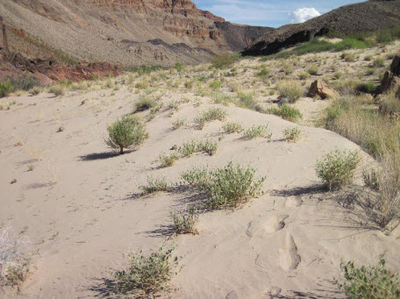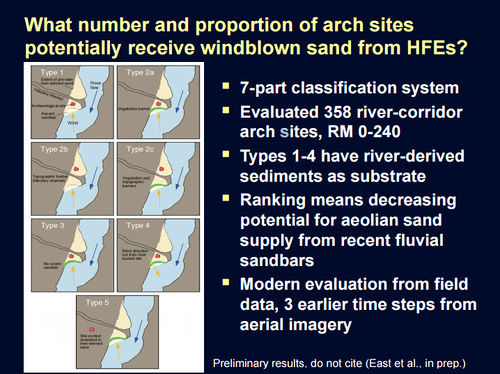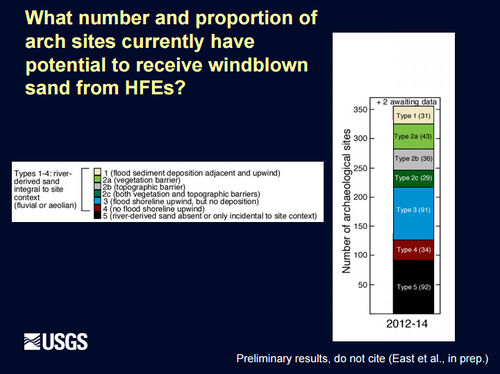Difference between revisions of "Aeolian Sand Transport"
From Glen Canyon Dam AMP
Cellsworth (Talk | contribs) |
Cellsworth (Talk | contribs) |
||
| Line 73: | Line 73: | ||
'''2017''' | '''2017''' | ||
| + | *[[Media:2017 Kasprak Earth Surface Processes and Landforms.pdf| Kasprak et al. 2017. Geomorphic process from topographic form:automating the interpretation of repeat survey data in river valleys: Earth Surface Processes and Landforms.]] | ||
*[https://www.usbr.gov/uc/rm/amp/twg/mtgs/17jan26/AR5_Sankey.pdf Fluvial-aeolian sediment connectivity during the current HFE protocol: alteration on fluvial-aeolian sediment connectivity in Grand Canyon ] | *[https://www.usbr.gov/uc/rm/amp/twg/mtgs/17jan26/AR5_Sankey.pdf Fluvial-aeolian sediment connectivity during the current HFE protocol: alteration on fluvial-aeolian sediment connectivity in Grand Canyon ] | ||
Revision as of 12:12, 19 April 2017
|
|
Aeolian Sand TransportSand can potentially help preserve archaeological features by direct burial and/or by mitigating gullying and other erosion. Sand can be deposited on archaeological features or within gullies via fluvial (river) or aeolian (wind) deposition. Most archaeological sites are above the highest contemporary river stage, so aeolian deposition is the most likely mechanism for preservation and/or erosion mitigation. River-sourced sand deposition is a time-dependent process, and the outer limit of that process may extend for many years after any individual HFE. Additionally, HFEs with targeted vegetation removal could produce a net sediment surplus at some sites. [1] |
| --- |
--- |
--- |
|---|
|
|


